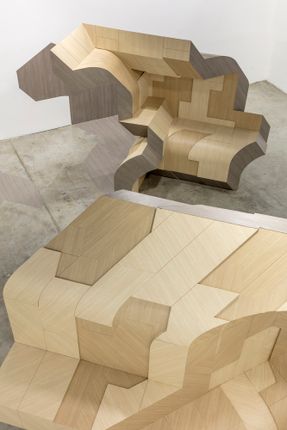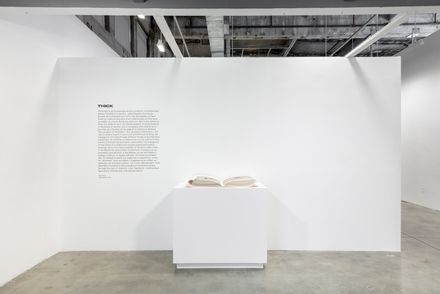ARCHITECTS
Spinagu
LEAD ARCHITECTS
Maxi Spina, Jia Gu
MANUFACTURES
Formica, Nelson Pine
SCI ARC FABRICATION SHOP
Brandon Youndt, Josh Wallin, Rodney Rojas, Hector Solis
FABRICATION COORDINATORS
Ravyn Crabtree, Rishab Jain
SCI ARC STUDENT WORKSHOP
Cheryl Linn, Saul Kim, Marianna Girgenti, Leo Liu, Luiza De Souza, Nicholas Perseo, Yunki Cheung, Bianca Hernandez, Cindy Liu, Adriane Yi, Rebecca Wiscombe, Daniel Arismendys Taveras-Hernandez, Siddardha Chalamala, Melissa Alvarez, Borja Lopez Calvino, German Diaz, Anna Bahudian, Justin Elliot, William Chen, Sammi Liang, Tucker van Leuwen-Hall.
SPECIAL THANKS
Hernan Diaz Alonso, Stephanie Atlan, Kate Merritt
ADDITIONAL FABRICATION ASSISTANCE
Jared White, Eastbridge Studio
PHOTOGRAPHERS
Joshua White Photography
AREA
1460 ft²
YEAR
2017
LOCATION
Los Angeles, United States
CATEGORY
Small Scale, Arts & Architecture
Thick is a research project that explores material thickness as a site of an architectural investigation. Alluded to in section, camouflaged in the figure-ground, and presented as a foil in the developed surface drawing, material thickness is an understudied architectural condition.
Thickness evades the elevation and hides out in the edges of projective drawing. As such, it is often considered a mere inconvenience of the real within systems of representation, and has served as an elusive site for many acts of design.
The project explores the peripheral role of material thickness within historic and contemporary processes of tooling and production.
The condition of thickness — the necessity of thickness — carries no central import in any era of architectural thinking, but still manages to circulate through different eras of architectural thinking.
Its condition is linked to (but is not central to) the history of stereotomy and stone construction; in the emergence of new forms of architectural drawing (see Robyn Evans’ “The Developed Surface”); and in the classic problem of the Doric order.
Even in the Modernist obfuscation of solid form, it remains an unavoidable consideration in the Miesian corner and Kiesler’s endless surfaces.
It is the consequence of architecture’s lack of medium-specificity, in its constant migration between the drawing, the picture plane, the screen, the tool path, the material, and the assembly.
Thickness is a constructive problem as much as it is a representational one.
In our present day standards of construction, thickness has become synonymous with material offset due to the predominance of sheet material, as opposite to stereotomy, in which thickness is derived from subtraction and removal of mass.
As such, thickness becomes a tectonic default rather than a techne to be designed. In today’s digital environments, thickness has become mere afterthought.
The digital model is infinitely thin. Its default property is a single line or algorithmic curve, and its “thickness” must be added. It appears as an offset, an extrusion, or an enclosed surface.
Here we begin to confront the limits of representation with its correspondent properties of material reality.
The project culminates with a two-month exhibition in the SCI-Arc gallery space, featuring new work by Spinagu.
The work is spatial (operating within / between / upon the literal walls of the gallery) as well as representational.
Coupled with a public discussion, the exhibition expands on the problems of material thickness through the topic of sections, ruins, fragments, constructions, figurations, simultaneity, and representation.
ACKNOWLEDGEMENTS
Thick has been generously supported by a grant from the Graham Foundation for Advanced Studies in the Fine Arts.
Thick is supported in part by the Formica Corporation. SCI-Arc exhibitions and public programs are made possible in part by a grant from the City of Los Angeles, Department of Cultural Affairs.


























